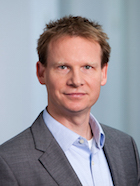
| Phone | +41 44 632 3465 |
| saarm(at)ethz.ch |
| Dominique Ballarin Dolfin | |
| Phone | +41 44 632 3465 |
| ballarin(at)ethz.ch | |
My research interests are in geophysical fluid dynamics of subsurface multiscale, multiphase, multicomponent, reactive fluid (groundwater, hydrocarbon, CO2) and energy (heat, pressure) transport, such as water- and CO2-based geothermal energy utilization, geologic CO2 storage, grid-scale energy storage, enhanced oil recovery, and groundwater flow. Methods include computer simulations, laboratory experiments, and field analyses.
This professorship and the associated Geothermal Energy and Geofluids (GEG) Group is generously endowed by the Werner Siemens Foundation, which is hereby gratefully acknowledged.
Publications
[Go to Proceedings Refereed] [Go to Proceedings Non-Refereed] [Go to Theses]
Underlined names are links to current or past GEG members
REFEREED PUBLICATIONS IN JOURNALS
Plasma Pulse Geo Drilling (PPGD) is a contact-less drilling technique, where an electric discharge across a rock sample causes the rock to fracture.
Experimental results have shown PPGD drilling operations are successful if certain electrode spacings, pulse voltages, and pulse rise times are given.
However, the underlying physics of the electric breakdown within the rock, which cause damage in the process, are still poorly understood.
This study presents a novel methodology to numerically study plasma generation for electric pulses between 200 to 500 kV in rock pores with a width between 10 and 100 \(\mu\)m.
We further investigate whether the pressure increase, induced by the plasma generation, is sufficient to cause rock fracturing, which is indicative of the onset of drilling success.
We find that rock fracturing occurs in simulations with a 100 \(\mu\)m. pore size and an imposed pulse voltage of approximately 400 kV.
Furthermore, pulses with voltages lower than 400 kV induce damage near the electrodes, which expands from pulse to pulse, and eventually, rock fracturing occurs.
Additionally, we find that the likelihood for fracturing increases with increasing pore voltage drop, which increases with pore size, electric pulse voltage, and rock effective relative permittivity while being inversely proportional to the rock porosity and pulse rise time.
[back to Top of Page]
PROCEEDINGS REFEREED
[back to Top of Page]
PROCEEDINGS NON-REFEREED
[back to Top of Page]
THESES



 orcid.org/0000-0002-4869-6452
orcid.org/0000-0002-4869-6452